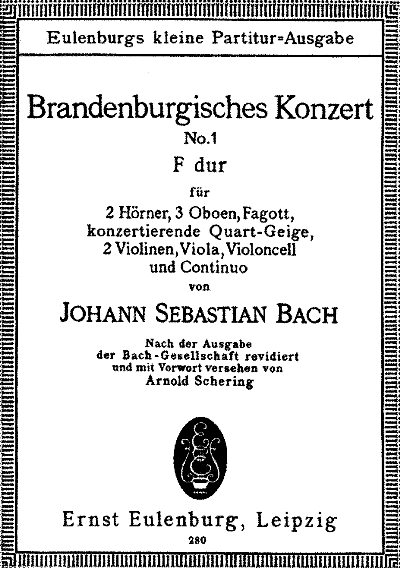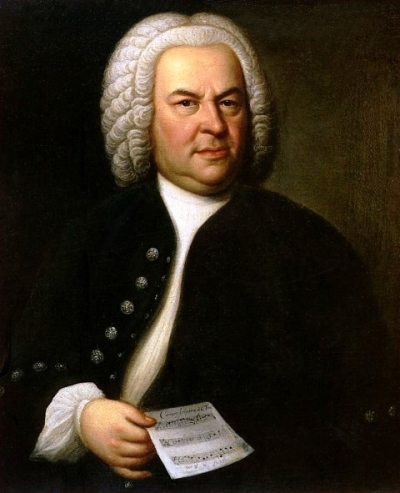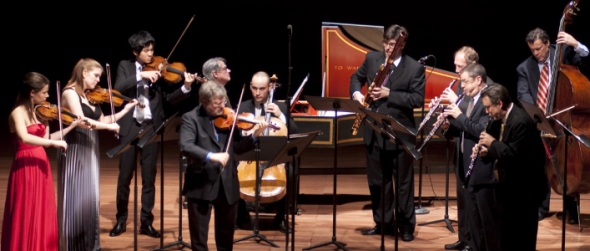Six-fold thriller: Lincoln Center chamber group makes a grand sweep of Bach ‘Brandenburgs’
Review: Bach’s six “Brandenburg” Concertos, played by the Chamber Music Society of Lincoln Center at the Harris Theater.
By Lawrence B. Johnson
In a strictly transcendental sense, Bach being the quasi-divine figure that he is in the pantheon of Western art music, the traversal of his six “Brandenburg” Concertos by the Chamber Music Society of Lincoln Center, on Dec. 17 at the Harris Theater, rocked.
 The author of those half-dozen incredible flights of musical fancy surely would have been wowed by the mix of vitality and virtuosity on display. Here was music of jubilee, a celebration in the spirit of the season, as brilliant and joyful as it was knowing and profound.
The author of those half-dozen incredible flights of musical fancy surely would have been wowed by the mix of vitality and virtuosity on display. Here was music of jubilee, a celebration in the spirit of the season, as brilliant and joyful as it was knowing and profound.
The six concertos – which immortalize the name of Christian Ludwig, Margrave of Brandenburg, for whom Bach intended these pieces as a sort of prospective job application – are salon-scaled works written for six different instrumental combinations. When performed in a single evening, they throw the solo spotlight on a wide assortment of musicians.
That’s hardly a problem for Lincoln Center’s all-star ensemble. A who’s who of classical music in America, they come from principal desks with leading orchestras as well as other eminent positions. The traveling band’s make-up may change from week to week and city to city, but its virtuosity is indeed staggeringly uniform. This particular sweep through the “Brandenburgs” was, end to end, a delightful romp, though one also punctuated by reflective moments of tenderness that could border on prayer.
While the troupe performs sans a stick-waving conductor, individual players take turns leading, much like the first violinist of a string quartet. And just that sort of collective precision, whether in animated attack or lyrical phrasing, is the invariable result. Mostly, the musicians stand while playing, in the manner of 18th-century court orchestras.
 But the Lincoln Center band does not perform on period instruments, with the notable exception of the harpsichord. No wooden flutes or gut strings or valveless horns. Just thoroughgoing musicianship and a smart grasp of the spirit of these works, their essential buoyancy alternating with ruminative music suggestive of Bach’s sacred cantatas or even the Passions.
But the Lincoln Center band does not perform on period instruments, with the notable exception of the harpsichord. No wooden flutes or gut strings or valveless horns. Just thoroughgoing musicianship and a smart grasp of the spirit of these works, their essential buoyancy alternating with ruminative music suggestive of Bach’s sacred cantatas or even the Passions.
Though the concertos were not played straight through here, in the standard arbitrary numbering 1 through 6, the visitors did begin at the conventional beginning, with Concerto No. 1 in F, which features two French horns along with (and often against) three oboes. Brisk tempos foretold the sometimes amazing speeds that would mark much of the evening, but the really wondrous element was the horn duo of Julie Landsman, retired principal of the Metropolitan Opera Orchestra, and Jennifer Montone, principal of the Philadelphia Orchestra. Their high-speed ornamentation in the finale pushed agility into the realm of riot.
 Each half of the program offered one of the two “Brandenburgs” for strings alone, but in reverse order. No. 6 for low strings (no violins) sang with warm, elegant playing from three violas opposite three cellos. Bach was writing for violas-da-gamba (literally leg viols), instruments held between the knees much like the modern cello. But as he could not have imagined his music being played in a modern concert hall seating 1,500 listeners, cellos – especially played with this level of finesse – were decidedly to be preferred here.
Each half of the program offered one of the two “Brandenburgs” for strings alone, but in reverse order. No. 6 for low strings (no violins) sang with warm, elegant playing from three violas opposite three cellos. Bach was writing for violas-da-gamba (literally leg viols), instruments held between the knees much like the modern cello. But as he could not have imagined his music being played in a modern concert hall seating 1,500 listeners, cellos – especially played with this level of finesse – were decidedly to be preferred here.
The full range of strings offered a gentle, albeit propulsive, account of the Third Concerto, which exists in just two movements with a two-chord progression constituting a breath-like transition. Although an adagio from some other work of Bach’s, or perhaps an extended cadenza by solo violin, is occasionally interpolated between the outer movements, the Lincoln Center troupe opted for concision, and with the barest of ornamentation as bridge plunged from the first movement into a rollicking finale.
For a sheer joyful rip, nothing on the program topped the Second Concerto, with Brandon Ridenour’s glistening roulades on piccolo trumpet slicing the air and electrifying the house. Harpsichordist Kenneth Weiss flashed some swagger and panache of his own in tossing off the prodigious keyboard part in the Fifth Concerto, though one was left to wonder why he was banished to the back of the band for his solo flight.
Crowning this glittering affair was the Fourth Concerto, with solo violin trading riffs with two flutes (or recorders, if you’d been listening some three centuries ago). Would I have opted here for recorders and lost the chance to hear the last and most dazzling of flutist Sooyun Kim’s stellar efforts for the night? Not a chance.
Related Link:
- The 2015-16 season schedule of events at the Harris Theater: Details at HarrisTheaterChicago.org
Tags: Bach, Brandenburg Concertos, Chamber Music Society of Lincoln Center


